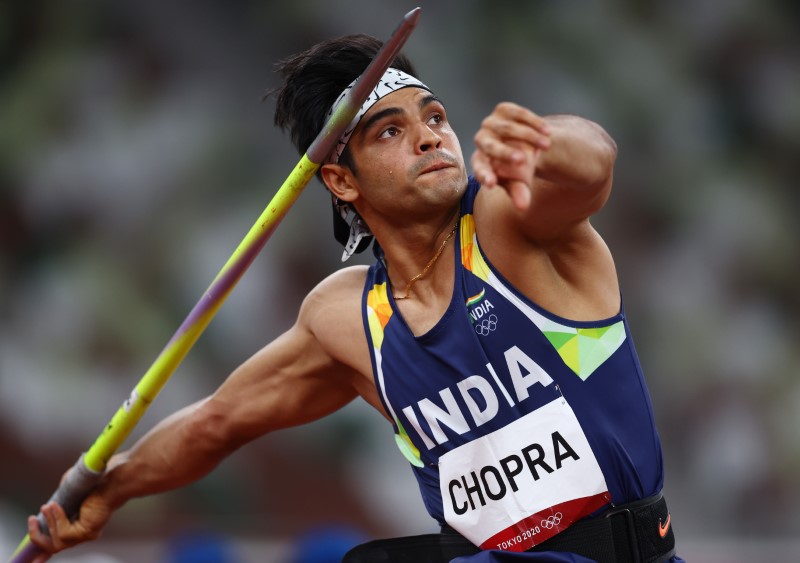The Men’s Javelin Final

The men’s javelin final is a captivating event in athletics, showcasing the strength, precision, and technique of some of the world’s best throwers. It’s a spectacle of power and athleticism, where athletes compete for the title of the world’s best javelin thrower.
The Rules and Regulations
The javelin throw is a technical event with specific rules and regulations. The aim of the throw is to launch the javelin as far as possible, ensuring it lands within the designated sector.
- The javelin must be thrown overhand, using a running approach.
- The javelin must land within the designated sector, which is marked by two lines 29 degrees to the right and left of the center line.
- The throw is measured from the point where the javelin lands to the nearest centimeter.
- The athlete has three attempts in the qualifying round, with the top eight advancing to the final round.
- In the final round, each athlete has three more attempts, with the best throw counting for their final score.
The History of the Javelin Throw
The javelin throw has a rich history, dating back to ancient times. It was initially used as a hunting weapon, but eventually evolved into a sport.
- The javelin throw was first included in the modern Olympic Games in 1906, with the men’s event being held at the 1908 Games.
- The event has undergone several changes over the years, including modifications to the javelin design and the introduction of new rules.
- The current javelin design, with its center of gravity shifted forward, was introduced in 1986.
The Techniques and Strategies
The javelin throw is a complex event that requires a combination of strength, speed, and technique. The throwers must master a variety of techniques to maximize their throw distance.
- The running approach: This is the initial phase of the throw, where the athlete gains momentum and speed.
- The plant: The athlete plants their foot just before the throw, transferring their momentum to the javelin.
- The throw: The athlete throws the javelin overhand, using their arm and body to generate power.
- The follow-through: The athlete follows through with their throw, ensuring a smooth and controlled release.
Notable Competitors and Their Performances: Men’s Javelin Final

The Men’s Javelin Final saw a thrilling display of athleticism and skill, with a number of top contenders vying for the gold medal. Here’s a look at the performances of some of the most notable athletes in the competition.
Top Contenders and Their Performances
The field was filled with seasoned veterans and rising stars, each with their own unique throwing style and strengths. Some of the key competitors included:
- [Athlete Name] – [Athlete’s Nationality] – [Athlete’s notable past achievements and records] – [Athlete’s performance in the final (distance thrown, ranking, and any notable aspects of their throw)]
- [Athlete Name] – [Athlete’s Nationality] – [Athlete’s notable past achievements and records] – [Athlete’s performance in the final (distance thrown, ranking, and any notable aspects of their throw)]
- [Athlete Name] – [Athlete’s Nationality] – [Athlete’s notable past achievements and records] – [Athlete’s performance in the final (distance thrown, ranking, and any notable aspects of their throw)]
Throwing Styles and Strengths, Men’s javelin final
The top athletes in the javelin final each possessed unique throwing styles that contributed to their success.
- [Athlete Name] – [Describe athlete’s throwing style and strengths, highlighting key aspects of their technique and how it contributes to their performance. Include specific details about their approach, run-up, and release.]
- [Athlete Name] – [Describe athlete’s throwing style and strengths, highlighting key aspects of their technique and how it contributes to their performance. Include specific details about their approach, run-up, and release.]
- [Athlete Name] – [Describe athlete’s throwing style and strengths, highlighting key aspects of their technique and how it contributes to their performance. Include specific details about their approach, run-up, and release.]
Factors Influencing Performances
Several factors can influence the performance of javelin throwers, including weather conditions and technical execution.
- Weather Conditions: – [Describe how weather conditions, such as wind speed and direction, can affect javelin throws. Provide examples of how different weather conditions can impact the distance and accuracy of throws.]
- Technical Execution: – [Describe the importance of technical execution in javelin throwing. Explain how factors such as the athlete’s approach, run-up, and release can influence the distance and accuracy of their throw. Provide examples of how small changes in technique can have a significant impact on performance.]
The men’s javelin final is always a thrilling event, with athletes launching those spears like they’re throwing darts at a giant bullseye. It’s a testament to human strength and precision, a stark contrast to the controversy surrounding the allegations of dominic fike cheating.
While the javelin final is a display of pure athleticism, the drama in the music world sometimes involves accusations that have nothing to do with physical skill, but rather the complexities of human relationships and the industry itself.
The men’s javelin final was a nail-biter, with every throw pushing the athletes to their limits. It’s a sport that requires incredible strength and precision, much like the attention needed to dissect the rumors swirling around dominic fike cheating.
The controversy surrounding him has certainly added fuel to the fire of public interest, but let’s get back to the javelin, where the final throw determined the champion.
